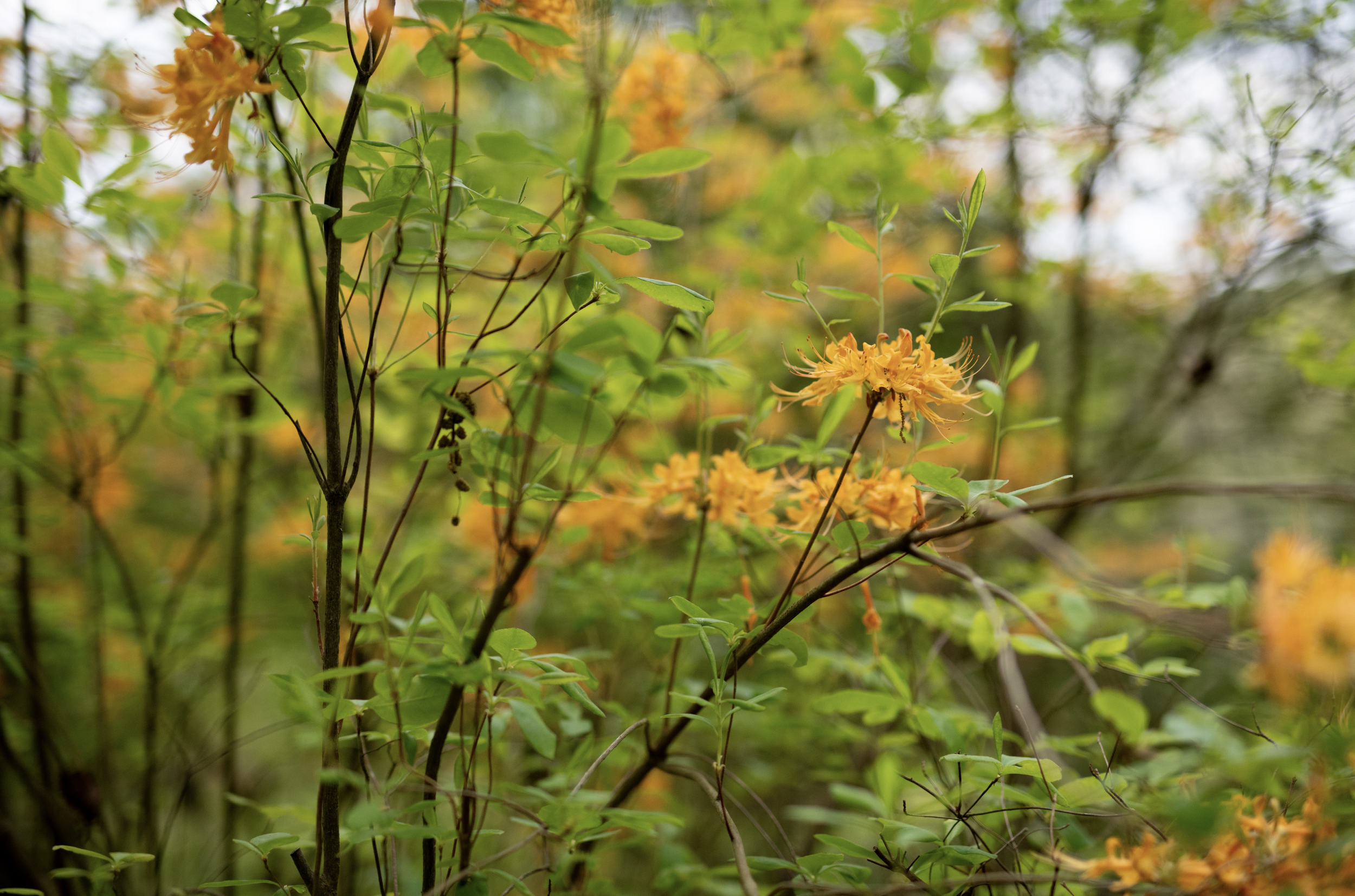Florida Flame Azalea
The Florida Flame Azalea (Rhododendron austrinum) is a woody shrub with vibrant, fiery blooms that inhabits the coastal Southeast. A woodland native, this plant attracts many kinds of pollinators—from hummingbirds to bees!
The Florida Flame Azalea’s flowers grow in clustered racemes. The corolla (i.e. petals) is covered in sticky, gland-tipped hairs.
The Florida Flame Azalea (Rhododendron austrinum) is a beautiful early-to-mid spring bloomer that grows along the coastal Southeast. A striking plant, this rhododendron emits a pleasant honeysuckle-like fragrance with its blossoms.
Scientific Description: Florida Flame Azaleas are deciduous shrubs in the Ericaceae (Blueberry) Family. Native to the lower United States, you can find this species across the Gulf Coastal Plain in Florida, Georgia, Mississippi, and Alabama. The shrub typically grows 8-10 feet tall and wide in moist, well-drained soil with an acidic pH. They occur naturally in hardwood forests, floodplains, slopes, bluffs, and ravines and thrive in partial shade with protection from the afternoon sun. Once established, they become more drought-tolerant. Their “flame” appears in the early-to-mid spring when vibrant trumpet-shaped flowers emerge in hues of yellow, orange, and red. In our region, this typically falls in April-May. The blossoms often appear before the leaves, making this display all the more spectacular!
Habitat Value: This plant’s trumpet-shaped flowers provide an early source of nectar for a wide range of pollinators—bees, butterflies, and hummingbirds. The Ruby-throated Hummingbird and several species of native bees frequent the plant’s blooms. The rhododendron also sustains specialized species, such as the Azalea Mining Bee (Andrena cornelli) and the Azalea Sphinx Moth (Darapsa choerilus) . By providing dense shelter and attracting insects, the shrub also supports songbirds such as the Carolina Wren, Eastern Towhee, Blue-gray Gnatcatcher, and Summer Tanager. Unfortunately, this species faces decline across its native range due to habitat loss and overcollection. The Florida Flame is even state-listed as an endangered species in Florida.
Burn bright with the Florida Flame Azalea!
Take Caution: Although beautiful, it is important to note that the Florida Flame Azalea, like many rhododendrons, is highly toxic to people, dogs, cats, and livestock due to grayantoxin and andromedotoxin. Do not consume any part of the plant.







